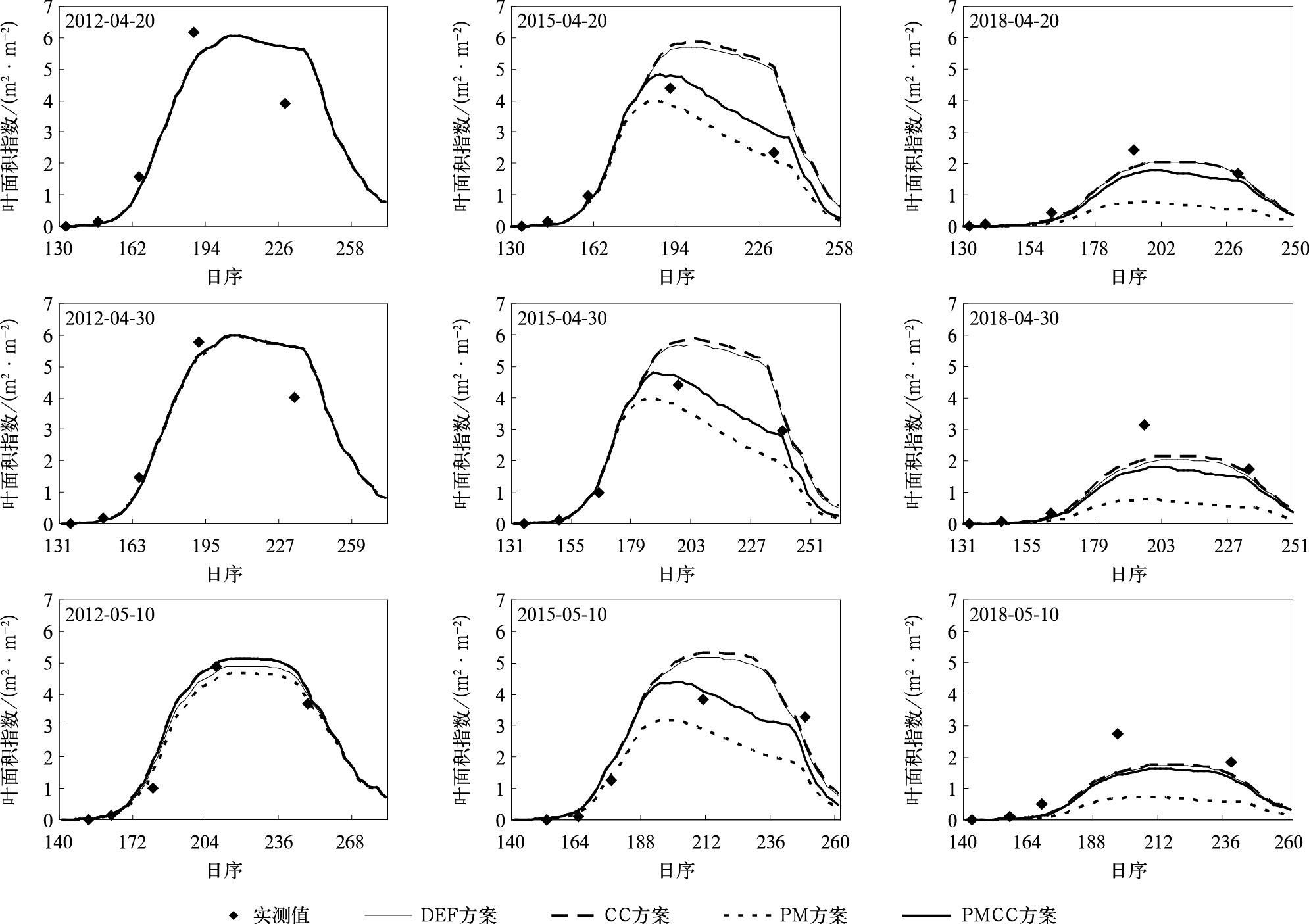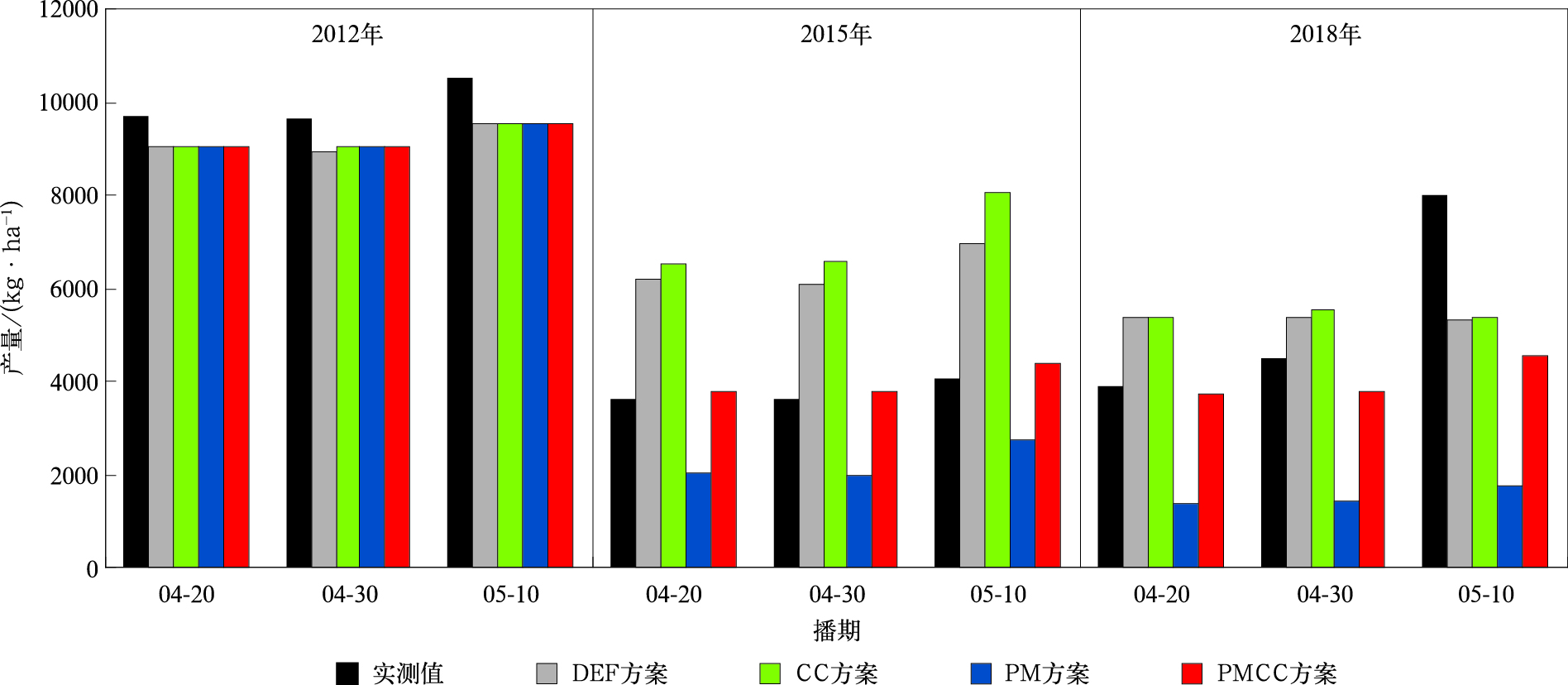|
[1]
|
Lobell D B, Roberts M J, Schlenker W, et al.Greater sensitivity to drought accompanies maize yield increase in the US Midwest. Science, 2014, 344: 516-519. doi: 10.1126/science.1251423 |
|
[2]
|
Myers S S, Smith M R, Guth S, et al.Climate change and global food systems:Potential impacts on food security and undernutrition. Annu Rev Publ Health, 2017, 38: 259-277. doi: 10.1146/annurev-publhealth-031816-044356 |
|
[3]
|
Wang P J, Ma Y P, Huo Z G, et al.Construction of the model for soil moisture effects on leaf photosynthesis rate of winter wheat. J Appl Meteor Sci, 2020, 31(3): 267-279. doi: 10.11898/1001-7313.20200302 |
|
[4]
|
Shi Z, Liang Z Z, Yang Y Y, et al.Status and prospect of agricultural remote sensing.Transactions of the Chinese Society of Agricultural Machinery, 2015, 46(2): 247-260.
|
|
[5]
|
Li Y B, Song H, Zhou L, et al.Tracking chlorophyll fluorescence as an indicator of drought and rewatering across the entire leaf lifespan in a maize field. Agr Water Manage, 2019, 211: 190-201. doi: 10.1016/j.agwat.2018.09.050 |
|
[6]
|
Guo J P.Research progression agricultural meteorological disaster monitoring and forecasting. J Appl Meteor Sci, 2016, 27(5): 620-630. doi: 10.11898/1001-7313.20160510 |
|
[7]
|
|
|
[8]
|
Song Y L, Wang J L, Tian J F, et al.The spring maize drought index in northeast China based on meteorological drought index. J Appl Meteor Sci, 2019, 30(1): 25-34. doi: 10.11898/1001-7313.20190103 |
|
[9]
|
Cheng Z Q, Meng J H, Wang Y M.Improving spring maize yield estimation at field scale by assimilating time-series hj-1 CCD data into the WOFOST model using a new method with fast algorithms. Remote Sens, 2016, 8(4): 303. doi: 10.3390/rs8040303 |
|
[10]
|
Zhao J, Yang X G, Liu Z J, et al.The possible effects of global warming on cropping systems in China.X:The possible impacts of climate change on climatic suitability of spring maize in the three provinces of Northeast China. Sciencia Agricultura Sinica, 2014, 47(16): 3143-3156. doi: 10.3864/j.issn.0578-1752.2014.16.003 |
|
[11]
|
Mi N, Cai F, Zhang Y S, et al.Effect of continuous drought during different growth stages on maize and its quantitative relationship with yield loss.Chinese Journal of Applied Ecology, 2017, 28(5): 1563-1570.
|
|
[12]
|
Cai F, Ming H Q, Xie Y B, et al.Effect of drought stress on root growth during the key growth periods of spring maize in Northeast China. Journal of Meteorology and Environment, 2018, 34(2): 75-81. doi: 10.3969/j.issn.1673-503X.2018.02.010 |
|
[13]
|
Cai F, Mi N, Ji R P, et al.Effects of drought stress and subsequent rewatering on major physiological parameters of spring maize during the key growth periods.Chinese Journal of Applied Ecology, 2017, 28(11): 3643-3652.
|
|
[14]
|
Song H, Li Y B, Zhou L, et al.Maize leaf functional responses to drought episode and rewatering. Agr Forest Meteorol, 2018, 249: 57-70. doi: 10.1016/j.agrformet.2017.11.023 |
|
[15]
|
Hao W P.Influence of Water Stress and Rewatering on Maize WUE and Compensation Effects.Beijing:Chinese Academy of Agricultural Sciences, 2013.
|
|
[16]
|
Ahuja I, De Vos R C, Bones A M, et al.Plant molecular stress responses face climate change. Trends Plant Sci, 2010, 15(12): 664-674. doi: 10.1016/j.tplants.2010.08.002 |
|
[17]
|
Xu Z Z, Zhou G S, Shimizu H.Plant responses to drought and rewatering. Plant Signal Behav, 2010, 5(6): 649-654. doi: 10.4161/psb.5.6.11398 |
|
[18]
|
Ma Y P, Huo Z G, Wang P J, et al.The construction and application of Chinese agrometeorological model (CAMM1.0). J Appl Meteor Sci, 2019, 30(5): 528-542. doi: 10.11898/1001-7313.20190502 |
|
[19]
|
Hou Y Y, Zhang Y, Wu M X, et al.Advances of modern agrometeorological service and technology in China. J Appl Meteor Sci, 2018, 29(6): 641-656. doi: 10.11898/1001-7313.20180601 |
|
[20]
|
Chen S N, Zhao Y X, Shen S H, et al.Study on maize yield estimation and accuracy assessment based on PyWOFOST crop model in Northeast China. Sciencia Agricultura Sinica, 2013, 46(14): 2880-2893. doi: 10.3864/j.issn.0578-1752.2013.14.004 |
|
[21]
|
Sun L L, Ma Y P, Jing Y S, et al.Assimilation of observations with crop growth model based on the constrained analysis of parameters. J Appl Meteor Sci, 2013, 24(3): 287-296. doi: 10.3969/j.issn.1001-7313.2013.03.004 |
|
[22]
|
Liu W, Hou Y Y, Wu M X, et al.Validation and adaptability evaluation of WOFOST model in spring maize area of northeast.Meteorological and Environmental Sciences, 2017, 40(3): 7-13.
|
|
[23]
|
Hijmans R J, Guiking Lens I M, Van Diepen C A.User Guide for the WOFOST 6.0, Crop Growth Simulation Model.Technical Document 12//DLO Winand Staing Centre, Wageningen, 1994.
|
|
[24]
|
|
|
[25]
|
|
|
[26]
|
Keating B A, Carberry P S, Hammer G L, et al.An overview of APSIM, a model designed for farming systems simulation. Eur J Agron, 2003, 18(3-4): 267-288. doi: 10.1016/S1161-0301(02)00108-9 |
|
[27]
|
Zhang J P, He Y K, Wang J, et al.Impact simulation of drought at different growth stages on grain formation and yield of maize. Chinese Journal of Agrometeorology, 2015, 36(1): 43-49. doi: 10.3969/j.issn.1000-6362.2015.01.006 |
|
[28]
|
Fang Y.Evaluation of Maize Drought Loss Based on Crop Growth Model.Shenyang:Shenyang Agriculture University, 2015.
|
|
[29]
|
Cao Y, Yang J, Xiong W, et al.Simulation of summer maize yield influenced by potential drought in China during 1961-2010.Acta Ecologica Sinica, 2014, 34(2): 421-429.
|
|
[30]
|
Mi N, Zhang Y S, Cai F, et al.Progress in the simulation of drought stress effect on crop production.Chinese Journal of Ecology, 2016, 35(9): 2519-2526.
|
|
[31]
|
DeJonge K C, Ascough Ⅱ J C, Andales A A, et al.Improving evapotranspiration simulations in the CERES-Maize model under limited irrigation. Agr Water Manage, 2012, 115: 92-103. doi: 10.1016/j.agwat.2012.08.013 |
|
[32]
|
Cai F, Mi N, Ji R P, et al.Determination of crop parameters for WOFOST model and its performance evaluation based on field experiment of spring maize in Jinzhou, Liaoning.Chinese Journal of Ecology, 2019, 38(4): 1238-1248.
|
|
[33]
|
Schneider C L, Attinger S, Delfs J O, et al.Implementing small scale processes at the soil-plant interface:The role of root architectures for calculating root water uptake profiles. Hydrol Earth Syst Sci, 2010, 14: 279-289. doi: 10.5194/hess-14-279-2010 |
|
[34]
|
Wang Y, Zhou G S.Evapotranspiration characteristics and crop coefficient of rain-fed maize agroecosystem.Chinese Journal of Applied Ecology, 2010, 21(3): 647-653.
|
|
[35]
|
Qin P C, Liu M, Wan S Q, et al.Methods for yield forecast based on crop model with incomplete weather observations. J Appl Meteor Sci, 2016, 27(4): 407-416. doi: 10.11898/1001-7313.20160403 |
|
[36]
|
|
|
[37]
|
Fang Z X.Simulation of Potential Maize Yield in Jilin Province Based on Crop Model under Climate Change.Shenyang:Shenyang Agriculture University, 2016.
|
|
[38]
|
Li X F, Ma S Q, Gong L J.Evaluation of meteorological suitability degree during maize growth period based on WOFOST in northeast China. Chinese Journal of Agrometeorology, 2013, 34(1): 43-49. doi: 10.3969/j.issn.1000-6362.2013.01.007 |
|
[39]
|
Monteith J L.Evaporation and surface temperature. Quart J Roy Meteorol Soc, 1981, 107: 1-27. doi: 10.1002/qj.49710745102 |
|
[40]
|
Zhang S J, Zhou G S, Li R P.Daily crop coefficient of spring maize using eddy covariance observation and its actual evapotranspiration simulation. J Appl Meteor Sci, 2015, 26(6): 695-704. doi: 10.11898/1001-7313.20150606 |
|
[41]
|
Ben-Asher J, Garcia A G Y, Hoogenboom G.Effect of high temperature on photosynthesis and transpiration of sweet coin (Zea mays L.var.rugose).Photo synthetic, 2008, 46(4): 595-603.
|
|
[42]
|
Wu W, Jing Y S, Ma Y P, et al.Light response characteristics of summer maize at different growth stages under drought. J Appl Meteor Sci, 2013, 24(6): 723-730. doi: 10.3969/j.issn.1001-7313.2013.06.009 |
|
[43]
|
Jiang P, Cai F, Zhao Z Q, et al.Physiological and dry matter characteristics of spring maize in northeast China under drought stress. Water, 2018, 10(11): 1561. doi: 10.3390/w10111561 |
|
[44]
|
|





 DownLoad:
DownLoad:







